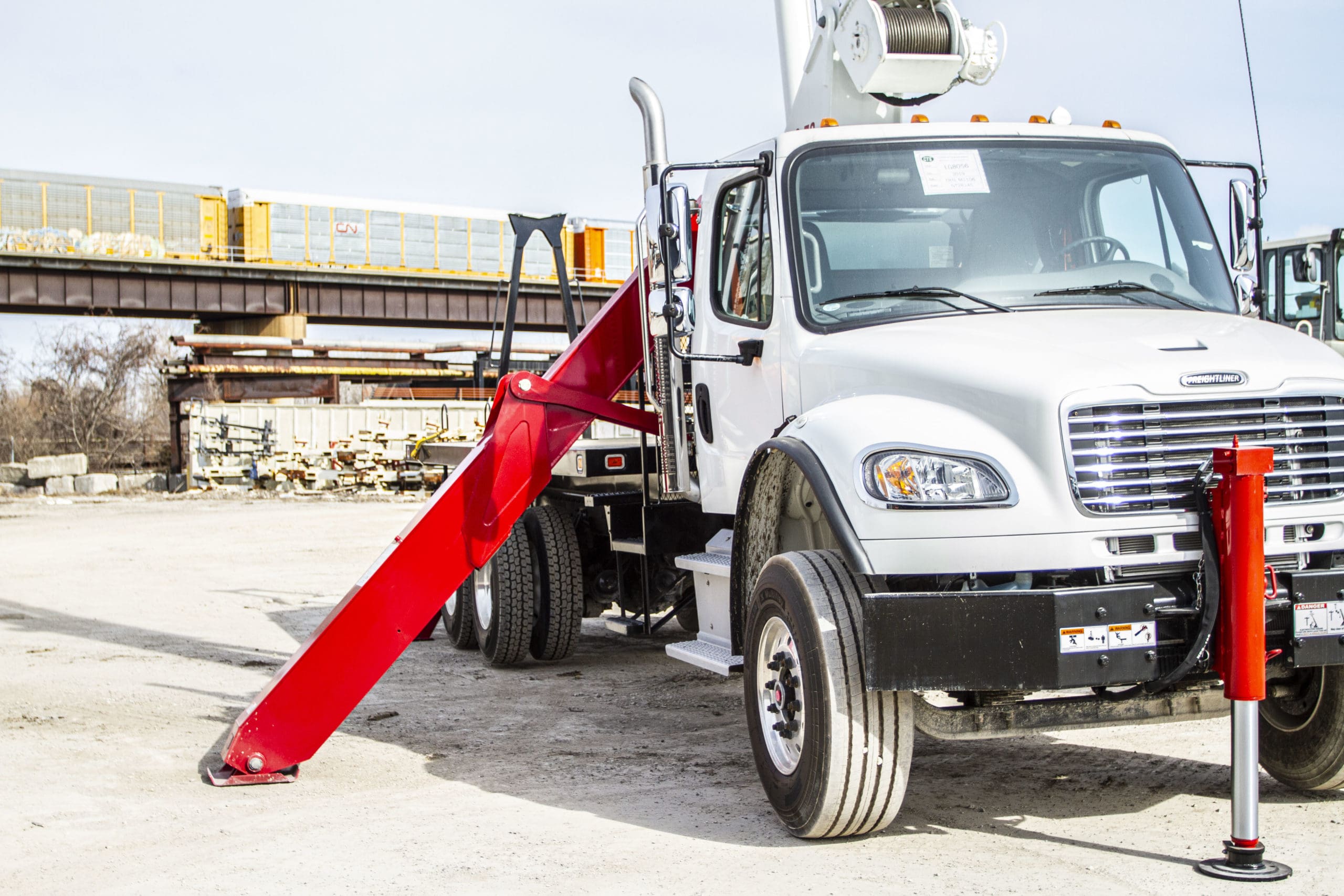
Any industrial job that needs material or workmen to be lifted off the ground requires the services of a crane. Crane trucks are heavy-duty vehicles outfitted with different kinds of cranes — stiff booms, knucklebooms, grapples, aerial buckets, etc. — and transport the lifting equipment to and from a jobsite. Some trucks also have payload-carrying capacity.
Once the truck-mounted crane has been positioned to work, the crane must be leveled.
This is where outriggers come in.
What Are Outriggers?
Outriggers (sometimes called Stabilizers) are retractable hydraulic `legs’ that extend, like a spider’s legs, away from the truck before they make contact with the ground.
Hydraulic outriggers commonly come in two shapes. There is the H style, with a pair of square or round legs positioned at the end of an extendable horizontal beam. The other is the A frame. Instead of extending out and down like an H-style, these extend down at an angle.
Regardless of their style, their purpose is to provide a solid, stable base by distributing the crane’s load over a wider area. Without them, crane trucks’ lifting capacity would be be significantly limited. (Think about trying to hold a bowling ball out to your side without spreading your legs).
Improper or careless set-up of the outrigger legs can cause serious accidents. In fact, according to OSHA, 80 % of incidents of cranes tipping occur due to human error, when the operator exceeds the crane’s lifting capacity. And over 50 % of these accidents are due to the improper use of outriggers. It is important, therefore, to make sure that the outriggers are properly deployed before activating the crane.
Outrigger Safety Checklist
#1: Inspect the Ground
When working with equipment that requires outriggers, the condition of the ground on which the outriggers will sit is the first concern.
When cranes exert hundreds of thousands of pounds of force over a small patch of ground area – be it asphalt, concrete, gravel, or loose, sandy, or wet soil, the concentrated pressure under the stabilizer legs can easily exceed the strength of the ground below, called the Ground Bearing Pressure. If the load exceeds the strength of the surface, the equipment can sink, damage surfaces and sub-surfaces, or topple over. One can measure the Ground Bearing Pressure with an inexpensive tool called a Penetrometer.
Additionally, the ground has to be inspected for slopes, depressions, voids, trenches, or any other irregularity that could compromise the equipment’s stability. If found, the area must be prepared until you are confident your equipment can safely operate on it.
#2: Be Aware of Your Surroundings
When setting up a crane truck in a busy, congested area, make sure the outriggers are not interfering with traffic. If they are, redirect the flow of traffic or readjust the position of the equipment to operate from a safer distance.
#3: Know the Maximum Outrigger Reaction Force
The manufacturer can provide outrigger force calculations following the creation of a lift plan. The outrigger reaction force applied through the outrigger feet is compared to the Ground Bearing Pressure to determine if the lift can be performed or if additional outrigger pads are required. The force calculated often surprises even experienced operators. Think about the bowling ball experiment. As you reach out further, your entire weight plus the weight of the ball will be on one foot. This is, in fact, the simplest approach to take in estimating the maximum outrigger reaction force. The entire weight of the crane plus the entire weight of the load applied to one foot. It’s often not as overly conservative as it sounds and can be done quickly on-site.
#4: Inspect and Position Outrigger Pads
Outrigger legs may be positioned on outrigger pads. These pads, or mats, increase the ground surface area over which the stabilizer force is distributed. They provide a firm, level surface on which you can perform your lift safely.
Before placing the pads down, make sure they are smooth and free from soil build-up and other debris. They should sit solidly on the ground. The entire surface of the pads should sit in contact with the ground. If there are depressions and voids, don’t set up your pads over them. Don’t use outrigger pads that are smaller than the outriggers’ feet. And finally, double-check to make sure that the outrigger foot is placed precisely in the center point of the outrigger pad.
#5: Be Alert to Signs of Instability
Always be on alert when the crane is at work. Watch every lift for any anomaly that may signal a problem. Watch the outrigger feet and/or pads for indications that they are sinking into the ground. Lifting of outriggers on the side opposite of the load is allowable on some equipment. Consult your operator’s manual. If you suspect something is amiss with the functioning of the equipment, stop the lift immediately, investigate the problem, and correct it before a serious accident could occur.



